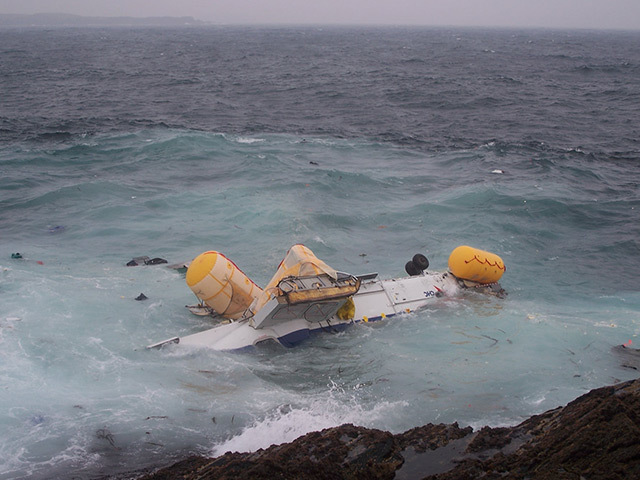
Air accident investigators probing the Shetland Super Puma crash revealed yesterday that both engines were delivering power until the aircraft hit the sea.
They also confirmed they had found no evidence that the loss of the helicopter had been caused by technical failure.
But an interim report by the Air Accidents Investigation Branch (AAIB) on the tragic accident that claimed four lives said analysis of the “black box” flight data recorder was continuing.
The report did reveal that both engines on the L2 were operating until the crash, despite a survivor reporting a total loss of power.
Last night the Unite union said the latest investigation report had done nothing to allay the fears of oil workers who have to fly in the aircraft.
The helicopter carrying 16 workers plunged into the sea two miles off of the west coast of Shetland last month, killing three men and one women.
An update report by investigators stated: “To date, no evidence of a causal technical failure has been identified.”
The helicopter, built by Eurocopter and operated by CHC Helicopter, was transporting workers from the Borgsten Dolphin to Sumburgh Airport in Shetland when it crashed just after 5.15pm on August 23, killing Gary McCrossan, 59, from Inverness, Sarah Darnley, 45, from Elgin, Duncan Munro, 46, from Bishop Auckland and George Allison, 57, from Winchester.
Mr McCrossan’s funeral takes place today. The report states data retrieved from the flight data recorder on Sunday reveals that at three miles from the runway of Sumburgh Airport the helicopter was on the expected approach route, with steadily decreasing speed.
One mile farther on, the aircraft had descended to 240ft below the expected height and was descending at a rate of 500ft per minute and was travelling 68 knots (78mph).
The aircraft speed then dropped to below 30 knots (34mph) and as it did so it “pitched increasingly nose-up”.
The report continued: “The rate of descent remained constant for a period, before increasing rapidly. Shortly thereafter the helicopter, which was intact, struck the sea in a near-level pitch attitude with a slight right bank. Both engines were delivering power until impact.”
Duncan Trapp, vice-president of safety and quality at CHC Helicopter, said: “We have received the update from the UK Air Accident Investigation Branch. It confirms that the available information continues to indicate that this tragic accident was an isolated event and no technical failure has been identified.”
A Eurocopter spokesman said: “Eurocopter continues to support the investigation and awaits the definitive results of the inquiry.”
Recommended for you
